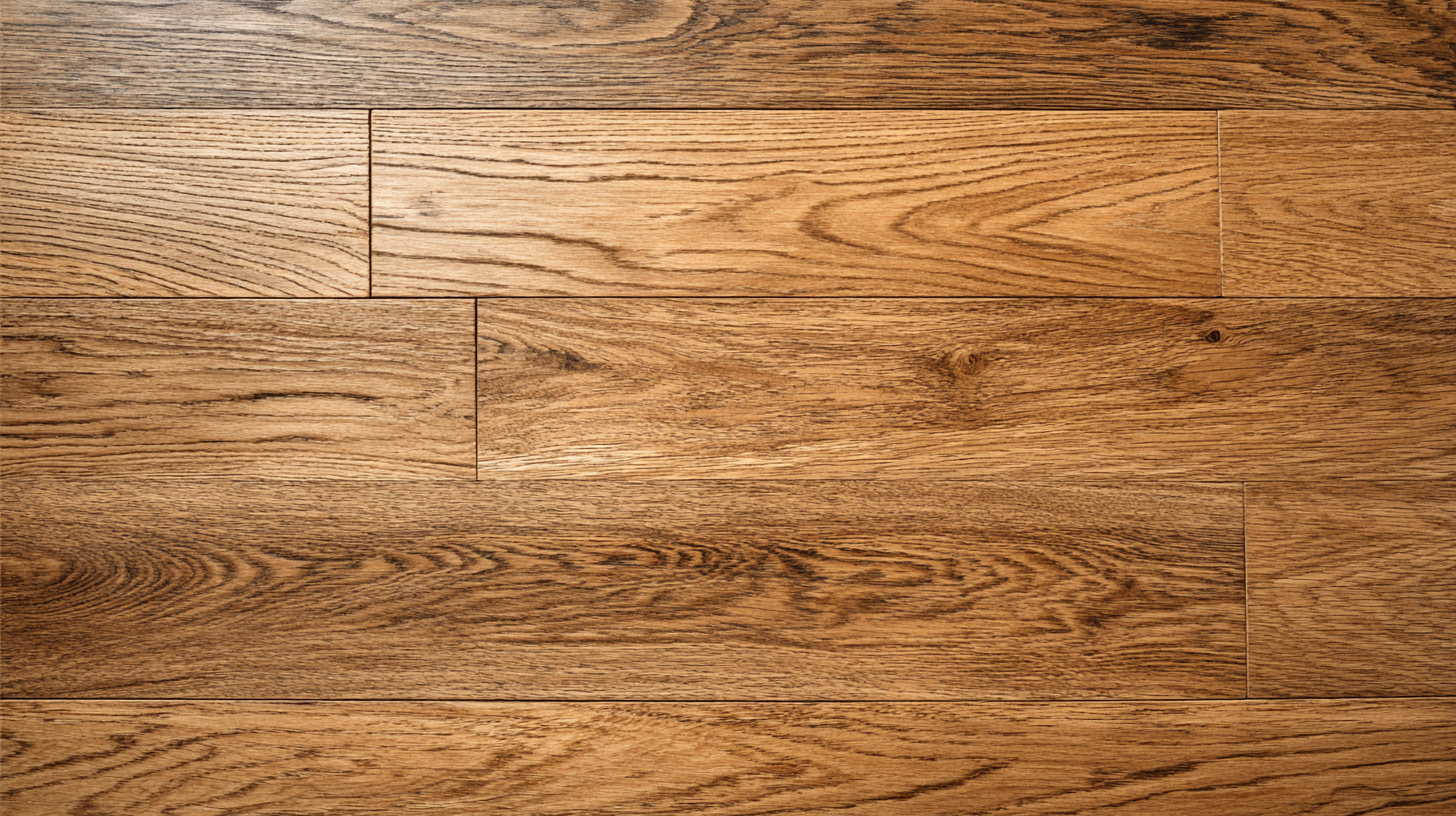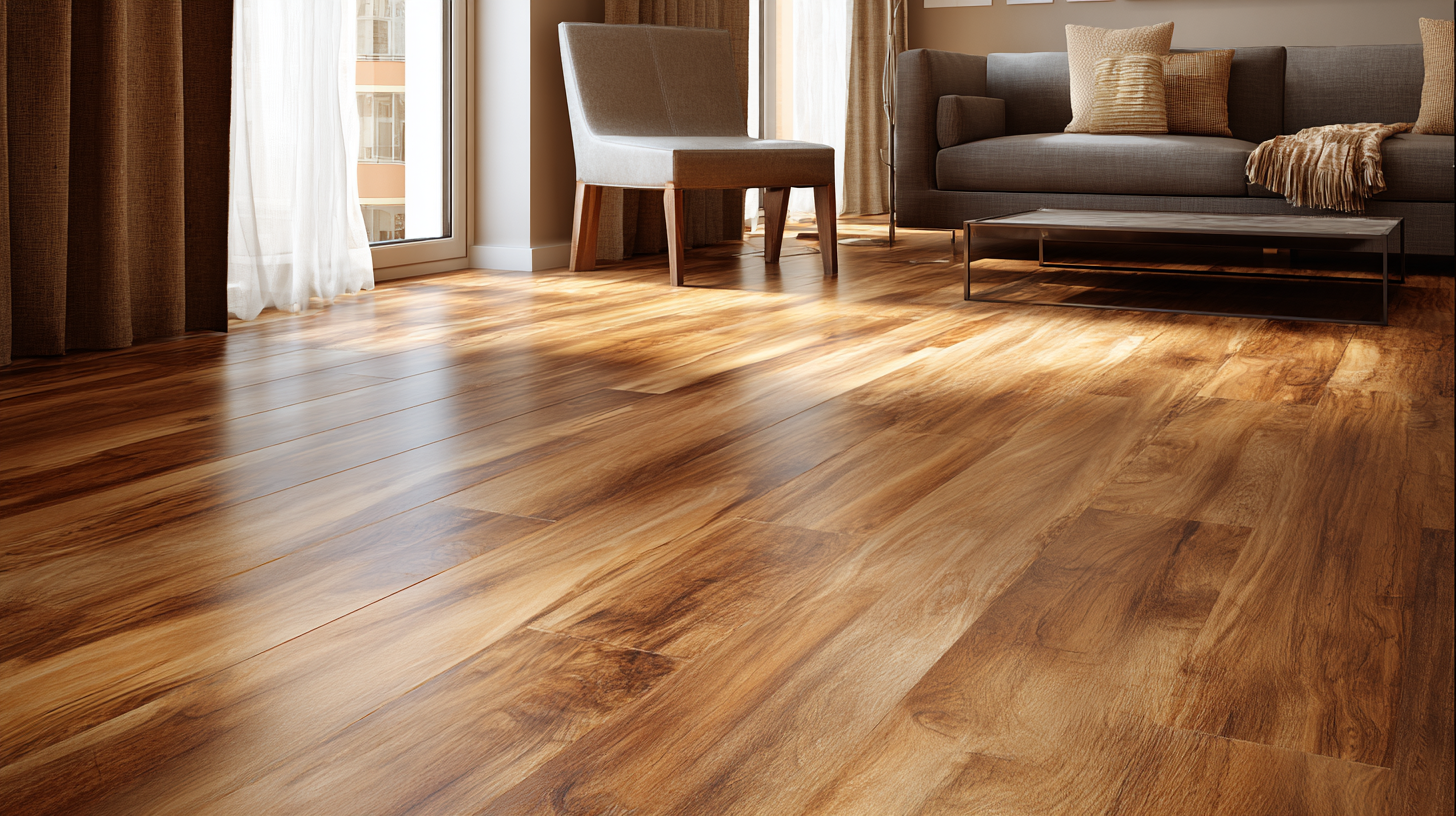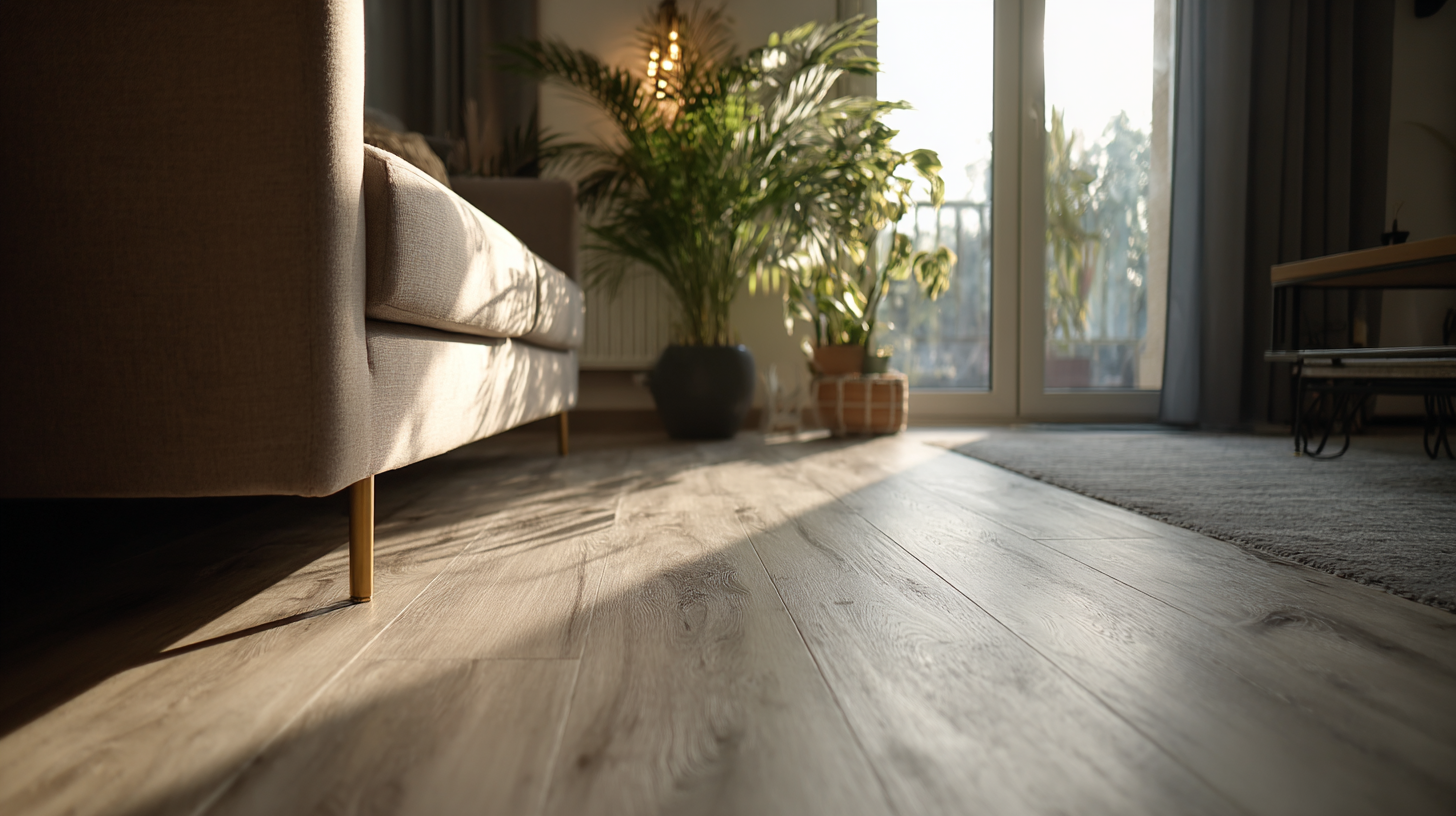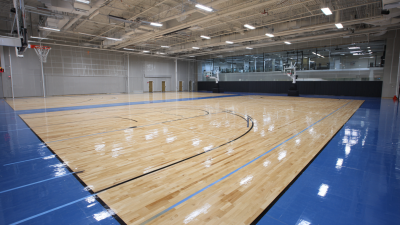
-
Home
-
About Us
-
Products
-
Solution
-
Accessories Service
-
Technicial Service
-
Additional Service
-
News
-
Blog
-
Contact Us
Leave Your Message

When it comes to selecting flooring for your home, the choices can feel overwhelming, but vinyl flooring stands out as an increasingly popular option. According to a report by the Resilient Floor Covering Institute, the vinyl flooring market is projected to reach over $25 billion by 2026, driven by its aesthetic versatility, durability, and cost-effectiveness. With advances in technology, modern vinyl flooring can mimic natural materials like hardwood and stone, providing homeowners with high-end looks at a fraction of the cost.

However, navigating through different types of vinyl flooring, styles, and installation methods can be daunting. That’s why we’ve compiled seven essential tips to help you choose the perfect vinyl floor for your home, ensuring that you make an informed decision that meets your needs and enhances your living space.
When it comes to choosing the perfect vinyl flooring for your home, understanding the various types available is crucial. There are primarily two categories of vinyl flooring: sheet vinyl and luxury vinyl tiles (LVT). Sheet vinyl is known for its affordability and water resistance, making it an excellent option for high-moisture areas like kitchens and bathrooms. On the other hand, luxury vinyl tiles offer a more upscale appearance and come in a variety of styles and textures, often resembling natural materials like wood or stone.
One essential tip is to consider your lifestyle when selecting vinyl flooring. If you have pets or children, opt for durable tiles that can withstand heavy traffic and potential scratches. Additionally, think about the installation process; some vinyl flooring options come with a peel-and-stick backing that makes them easy to install, while others may require professional assistance. Lastly, always evaluate the warranty and maintenance requirements of the flooring type you choose, as it can significantly affect the long-term satisfaction with your flooring choice.

When it comes to selecting the perfect vinyl floor for your home, evaluating durability and maintenance is crucial. According to the Resilient Floor Covering Institute, high-quality vinyl flooring can last anywhere from 10 to 20 years, making it a practical option for high-traffic areas. Look for products with a thick wear layer, ideally between 20 to 30 mil, which can enhance resistance to scratches, dents, and stains. A robust wear layer not only protects the aesthetic appeal of the flooring but also minimizes the frequency and cost of replacements.
Maintenance is another vital aspect of vinyl flooring that cannot be overlooked. The National Wood Flooring Association reports that vinyl floors are among the easiest types to maintain, requiring only regular sweeping and the occasional damp mopping. Opt for vinyl with a protective coating that repels dirt and moisture, which further simplifies upkeep. Furthermore, innovations in vinyl technology, such as enhanced resistance to fading and mold, ensure that your investment not only looks great but stays functional and appealing over time. Choosing a vinyl floor with these key features will enhance your home’s comfort and style while minimizing long-term maintenance efforts.
When choosing the perfect vinyl floor for your home, aesthetic considerations play a crucial role. Colors and patterns must harmonize with your existing décor to create a cohesive environment. With the rising trend of maximalist decor, homeowners are increasingly opting for bold patterns and vibrant colors. According to a recent study, incorporating traditional patterns into modern spaces can evoke a sense of cultural richness while appealing to contemporary tastes. Choosing vinyl flooring that mirrors these vibrant designs can elevate your home’s visual appeal.
Tip 1: Consider the Mood - Assess the mood you want to create in each room. Warm colors tend to evoke coziness, while cooler tones can induce calmness. For instance, using bright vinyl with intricate patterns in a play area can enhance creativity, inspired by studies on consumer psychology and children’s product design.
Tip 2: Coordinate with Existing Elements - When selecting colors, look around your space; the flooring should complement your walls, furniture, and other decor elements. If you lean towards minimalism with cream walls and beige furniture, a patterned vinyl in deep hues can add a striking focal point without overwhelming the aesthetic. Always keep in mind the balance between bold and subtle to maintain harmony in your living space.
| Tip | Description | Best Colors | Ideal Patterns |
|---|---|---|---|
| 1. Assess Your Space | Consider the size, lighting, and purpose of the room. | Light neutrals, whites | Solid colors |
| 2. Match Your Existing Décor | Choose colors that complement your furniture and walls. | Subtle earth tones, pastels | Herringbone, geometric |
| 3. Consider the Room's Function | Select durable materials for high-traffic areas. | Bold colors for play areas | Stripes, wave patterns |
| 4. Explore Texture and Finish | Opt for finishes that create depth and interest. | Matte, textured | Wood grain, stone effect |
| 5. Use Samples Wisely | Test samples in natural light before making a decision. | Varied depending on sample | Varied depending on sample |
| 6. Think About Future Trends | Choose styles that will stand the test of time. | Timeless neutrals | Classic motifs |
| 7. Budget Considerations | Set a realistic budget and stick to it. | Affordable shades | Solid, minimal patterns |
When selecting vinyl flooring for your home, comfort and safety should be paramount in your decision-making. Recent studies show that vinyl flooring can significantly impact the quality of your living environment. For instance, a report by the Resilient Floor Covering Institute highlights that vinyl floors can reduce noise levels by up to 30%, providing a quieter and more serene space for families. This sound-dampening feature is particularly beneficial in homes with children or multi-story living, promoting a more comfortable atmosphere.
Safety is another crucial aspect of vinyl flooring. The National Floor Safety Institute has reported that vinyl flooring can provide excellent slip resistance, which is vital in high-traffic areas, especially for elderly clients or homes with young children. Many vinyl products come with coatings that enhance traction, reducing the likelihood of accidents. Moreover, vinyl is often designed to be softer underfoot compared to harder flooring options like tile or hardwood, making it a safer choice for those who spend long hours standing or for homes where falls may occur. By prioritizing comfort and safety, you can ensure that your vinyl flooring not only enhances your home’s aesthetic but also contributes positively to your living environment.
When it comes to budgeting for vinyl flooring, understanding the costs involved is crucial for homeowners. The price of vinyl flooring can vary greatly depending on the type, brand, and quality. On average, vinyl planks may cost from $2 to $7 per square foot, while sheets typically range from $1 to $5 per square foot. It's essential to factor in not just the material cost but also any additional expenses such as underlayment, adhesive, and tools, if you're planning a DIY installation.

Installation costs can also impact your overall budget. Hiring a professional can add anywhere from $1 to $3 per square foot. However, if you choose to install the flooring yourself, you'll save on labor costs, allowing you to allocate more of your budget toward higher-quality materials. Additionally, consider the long-term value of vinyl flooring. While the initial investment might seem significant, vinyl is known for its durability and low maintenance, making it a cost-effective choice in the long run. Opting for a quality product can enhance your home's aesthetic appeal and resale value, turning your flooring purchase into a savvy investment.





